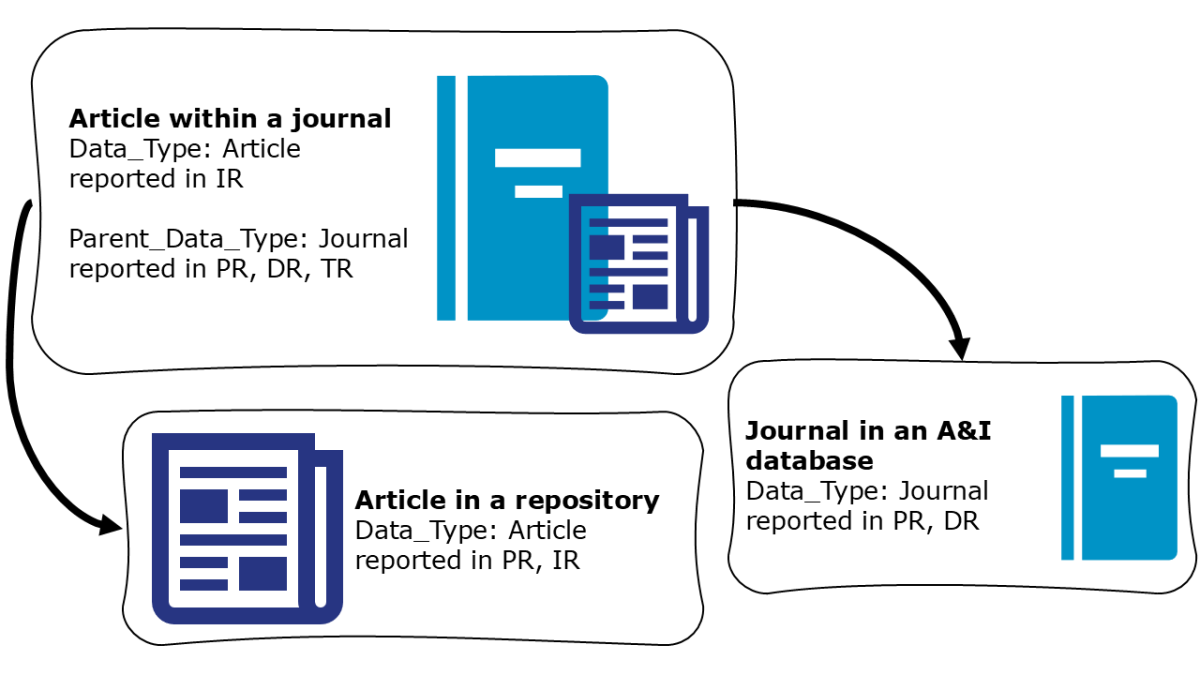Aggregated content: Data Types and Parent Data Types
30 October 2025What is aggregated content, anyway?
We use the word aggregated a lot in COUNTER! Individual pieces of content (items) are often aggregated into titles, and titles and items are often aggregated into databases. We manage the first type of aggregation, item-to-title, using Data_Type-to-Parent_Data_Type pairings.
We have ten Data_Types that may be used independently, but can also be linked or aggregated into pairs. For example,
- An article that is part of a journal on an eJournal website has Data_Type: Article and Parent_Data_Type: Journal. Article would show up in the Item Report, and Journal would show up in the Platform, Database and Title Reports.
- The same article in an institutional repository only has Data_Type: Article, which appears in the Platform and Item Reports.
- And the same journal in an A&I database only has Data_Type: Journal, which appears in the Platform and Database Reports.

What are the aggregated content Data_Types in COUNTER?
Now we know how the aggregated Data_Type and Parent_Data_Type relationship works, it’s time to look at the list:
- We already know that Parent_Data_Type Journal is linked to Data_Type Article.
- Newspapers, magazines, newsletters and other serialised content have Parent_Data_Type Newspaper_or_Newsletter and Data_Type News_Item.
- New for Release 5.1 is the Parent_Data_Type Conference, linked to Data_Type Conference_Item. Conference_Item can be used for all conference outputs, whether those are posters, abstracts, videos or papers.
- Next up we have Parent_Data_Type Book. This is linked to Data_Type Book_Segment. We don’t use more specific terms like chapter, essay, or section for the way that books are subdivided, because there are just so many of them.
- Lastly, the Parent_Data_Type Reference_Work is paired with Data_Type Reference_Item. These are also new for Release 5.1, introduced to solve the problem of textbooks, encyclopaedias and other major reference works having very different usage patterns from monographs or edited volumes. Each entry in an encyclopedia, for example, can be a Reference_Item.
What does this mean for me?
Most of the time, the Data_Type-to-Parent_Data_Type pairings won’t affect how you use COUNTER reports. But the old Item Report allowed a much wider range of pairs, so if you are used to that you might see some changes. In JSTOR’s IR, for example, you’ll only see Article-to-Journal and Book_Segment-to-Book in R5.1 reports, where previously there was more flexibility.


